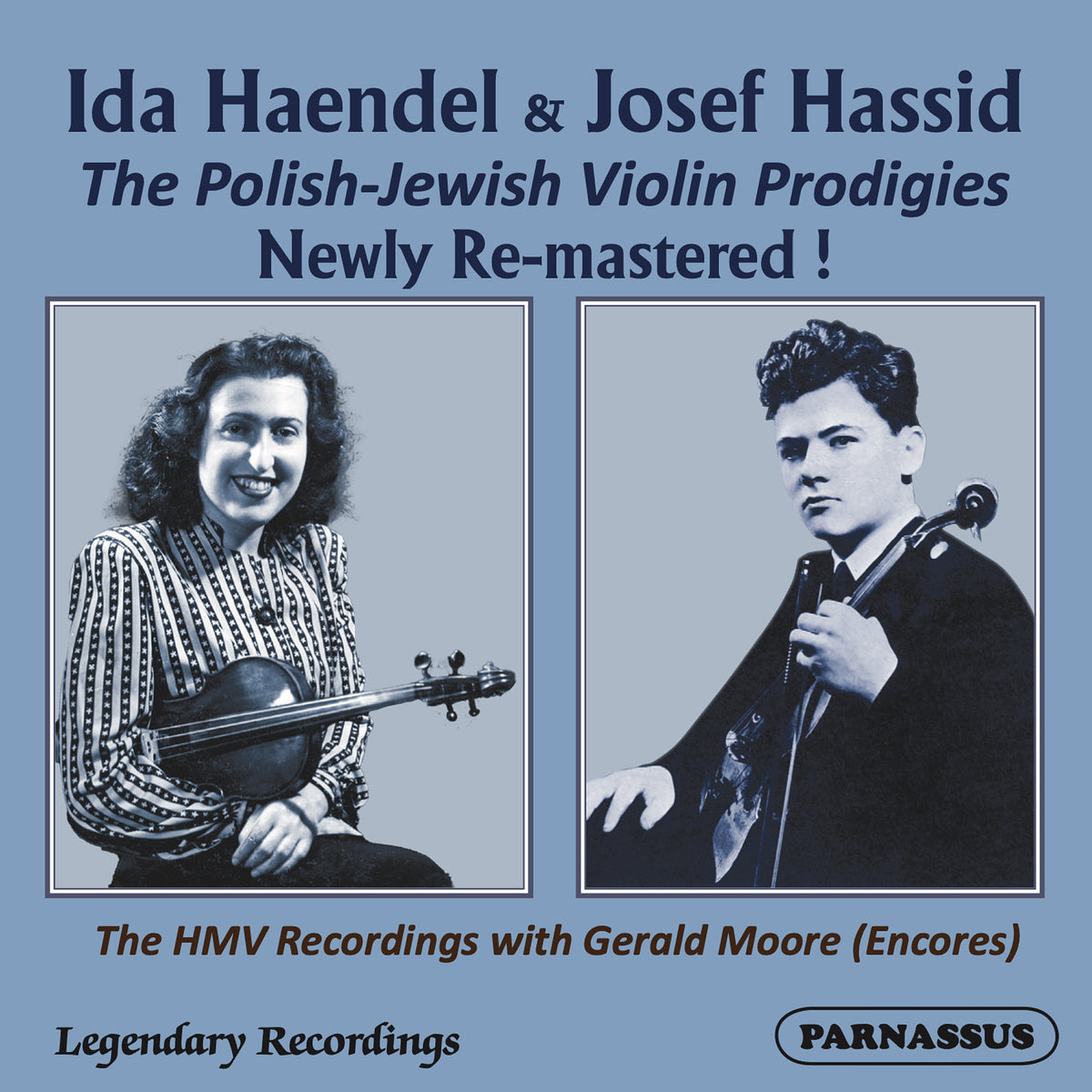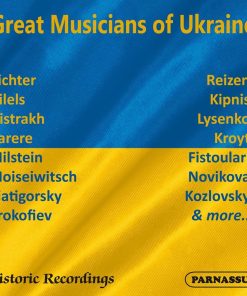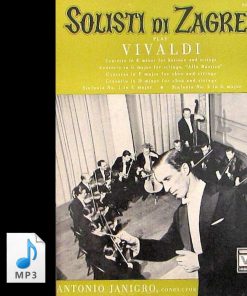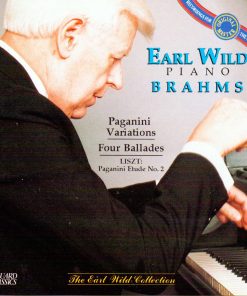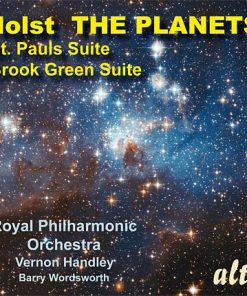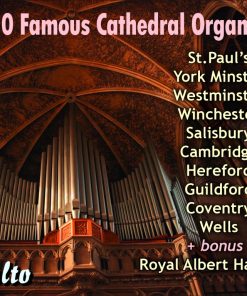IDA HAENDEL & JOSEF HASSID: THE POLISH-JEWISH VIOLIN PRODIGIES (DIGITAL DOWNLOAD) PARNASSUS
$ 7,99 $ 4,79

1
Giuseppe Tartini arr. Leslie Bridgewater: Andante and Presto
6:47
2
Niccolò Paganini: 24 Caprices, Op. 1 – No. 24 in A Minor
7:37
3
Ernest Bloch: Baal Shem – No. 2. Nigun
6:22
4
Antonín Dvořák arr. Fritz Kreisler: Slavonic Dances, Op. 46 – No. 2 in E Minor
4:40
5
Johannes Brahms arr. David Hochstein: Waltzes, Op. 39 – No. 15 in A-Flat Major
2:29
6
Béla Bartók arr. Zoltán Székely: Six Romanian Folk Dances, BB 68, Sz. 56
6:04
Tracks 1-6 originally issued as HMV CLP 1021 in 1953
7
Maurice Ravel: Habanera
3:02
Recorded 18 May 1950; matrix OEA14712; first released as HMV B9994
8
Henryk Wieniawski: Polonaise brillante in D Major, Op. 4
4:34
Recorded 21 September 1948; matrix 2EA13272; first released as HMV C3818
9
Edvard Grieg arr. Joseph Achron: Scherzo-Impromptu, Op. 73 No. 2
2:24
Recorded 18 May 1950; matrix OEA14709; first released as HMV B10135
10
Aaron Copland: Rodeo – Hoe Down
2:56
Recorded 18 May 1950; first released as HMV B9994
Ida Haendel,violin • Gerald Moore, piano
11
Piotr Ilich Tchaikovsky: Mélodie, Op. 42 No. 3
3:10
Matrix OEA8550; first released as HMV B9074
12
Dvořák arr. Kreisler: Humoresque, Op. 101 No. 7
3:26
Matrix 2EA9052; first released as HMV C3219
13
Jules Massenet arr. Martin Pierre Marsick: Thaïs – Meditation
4:00
Matrix 2EA9053; first released as HMV C3208
14
Edward Elgar: La Capricieuse, Op. 17
3:25
Matrix OEA8803; first released as HMV B9074
Pablo de Sarasate
15
Danzas Españolas – No. 5. Playera, Op. 23 No. 1
4:07
Matrix 2EA8801; first released as HMV C3185
16
Danzas Españolas – No. 6. Zapateado, Op. 23 No. 2
3:30
Matrix 2EA8802; first released as HMV C3185
17
Kreisler: Caprice Viennois, Op. 28
3:43
Matrix 2EA8900; first released as HMV C3208
18
Achron: Hebrew Melody, Op. 33
4:41
Matrix 2EA9051; first released as HMV C3219
Tracks 11-18 recorded in 1940
Josef Hassid, violin • Gerald Moore, piano
This album showcases recordings by two major violinists of the
mid-20th century, Josef Hassid (1923–50) and Ida Haendel
(1923/8*–2020). Both were from similar backgrounds, born in
Poland of Jewish descent in the 1920s, and both had their first
major successes in London in the late 1930s. Their recordings also
document an important shared influence, the teaching of Carl
Flesch (1873–1944). Flesch was a major virtuoso of the previous
generation, but who made relatively few recordings (Ed: 1905-36
Odeon, Edison, Electrola, DGG). However, his artistic values,
characterised by pure tone and solid technique, shine through in
the recordings of his pupils, giving us a chance to hear a major
school of violin playing from its earliest years.
Carl Flesch was born Karoly Flesch in Moson (now part of
Mosonmagyarovar) in Hungary. At the age of 10 he entered the
Vienna Conservatory, and from 17 continued his studies at the
Paris Conservatory. His teaching activities began soon after, and
throughout the remainder of his career he was equally famous as a
teacher, a soloist and a chamber musician. From 1897 he
performed and taught in Bucharest, and from 1903 in Amsterdam.
In both cities, his performances were mainly of chamber music, but
more solo engagements followed his move to Berlin in 1908.
Flesch is also remembered today for his violin teaching books, and
the most famous, Die Kunst des Violin-Spiels (The Art of Violin
Playing), appeared in 1923. In 1924, he was appointed head of the
string department at the newly founded Curtis Institute in
Philadelphia, where he taught until 1928. His renown as a teacher
increased through his annual summer courses in Baden-Baden
from 1926 (which included Ginette Neveu PACL 95006 also), but in
1934 he was forced to flee the Nazis and settled in London. It was
here that he taught both Hassid and Haendel. Despite his Jewish
ancestry, Flesch continued to travel in occupied Europe. He was
detained by the Nazis in the Netherlands, but was eventually
allowed to leave to return to Hungary. At the end of his life he
settled in Switzerland, where he taught at the newly founded
Lucerne Conservatory.
Josef Hassid was born Jozef Chasyd in Suwałki, in Northeast
Poland. His initial studies were at the Chopin School of Music in
Warsaw. Bronisław Huberman heard Hassid play and
recommended that he attend the summer course run by Carl
Flesch in Spa, Belgium in 1937. Flesch was impressed and invited
Hassid to London to continue his studies. In his memoirs, Flesch
described Hassid as ‘no doubt one of the strongest violin talents of
his time.’ Their lessons focussed on interpretion, as Flesch
considered Hassid’s technique to already be perfect.
In London, Hassid pursued a short but spectacular career. Major
violinists would often visit Flesch’s London house, and many were
stunned to hear the quality of Hassid’s playing, including Szigeti,
Thibaud, Oistrakh and Kreisler. Hassid made his public debut at
the Wigmore Hall on 3 April 1940, accompanied by Gerald Moore.
Three weeks later, Hassid made his orchestral debut at the Queen’s
Hall, playing the Tchaikovsky Violin Concerto for a Polish Relief
Fund concert. During the performance, he suffered a major
memory lapse, hinting at the mental problems that would soon end
his career.
Hassid’s recordings date from 1940, from two sessions in June and
one in November at Abbey Road Studios. He had previously made a
‘test recording’ of Elgar’s La Capricieuse with accompanist Ivor
Newton in January 1939. But Hassid was still only 15 years old,
and his manager, Harold Holt, thought he should continue his
studies before recording any further. The 1940 sessions were
produced by Walter Legge and included a second version of the
Elgar miniature. The three sessions yielded just eight short works,
each a 78-rpm side, but between them they document a unique and
prodigious talent. In the early months of 1941, Hassid gave two
concerto performances, of the Beethoven with Sir Adrian Boult
conducting the London Philharmonic on 5 January, and the Brahms
with the Sidney Beer Symphony Orchestra on 1 March. But this
was to be his last ever performance. His behaviour became
increasingly violent and erratic, and in June he was diagnosed with
schizophrenia. He was confined to a mental institution in
Northampton, and for some months his condition improved. He
was later moved to institutions in Hillingdon and then Epsom. But the death of his father in 1949 brought on a severe deterioration.
The following year, surgeons performed a lobotomy, but an
infection contracted during the surgery developed into meningitis,
and he died a few weeks later.
Ida Haendel was another of the young violinists dominating the
London music scene through the war years, but for her this was
just the start of a long and successful career. Haendel was born in
Chełm, in Southeast Poland. She won several violin competitions
from the age of five, and was a laureate of the first Henryk
Wieniawski Violin Competition in 1935. Like Hassid, Haendel also
received early praise from both Bronisław Huberman and Joseph
Szigeti, and it was Szigeti who organised for the young violinist to
travel to London to study with Carl Flesch. She performed a recital
at Queen’s Hall in 1936. However, the London County Council
forbade Sunday performances by children. So her father produced
a birth certificate claiming she was five years older and born in
1923. This birthdate* continued to appear in many later sources. In
1937, she made her concerto debut, playing the Beethoven
Concerto with Sir Henry Wood. The conductor became a major
supporter of the violinist, and their collaboration led to a long
association with the Proms, with Haendel performing there on 68
occasions. (*“Who’s Who in Music” showed her born in 1923, and
information for that publication was always provided by the
musician. According to Tully Potter, there is a letter from Mrs. Carl
Flesch in 1935 saying, “…. how wonderful to hear your 13-year-old
pupil Ida Haendel”!) [Ed: we suspect a dose of female reticence
added to her father’s ‘marketing’ might have encouraged 1928,
especially as her own published 1939 photo appears much more of
a 16 year-old than an 11 year-old.]During the war, Haendel performed around the country for factory
workers and for British and American troops. She also participated
in the Myra Hess National Gallery Concerts. Her international
performing career took off in the late 1940s, beginning with a tour
of America 1946–7. In 1949 she gave a performance of the Sibelius
Concerto in Helsinki, which the composer praised, writing, ‘You
played it masterfully in every respect.’
The recordings presented here also date from these years and
show Haendel’s broad range of musical interests. But the
repertoire of her chamber performances narrowed in later years,
with both her performing activities and her recordings focusing
more on concertos. The German Romantics remained at the core of
her repertoire, plus the Sibelius Concerto. She played many 20thcentury
concertos, and premiered works by Luigi Dallapiccola and
Allan Pettersson, whose Second Violin Concerto is dedicated to her.
In 1952 Haendel moved to Montreal and became an important
figure in Canadian classical music. She continued to perform
internationally, and in 1973 became the first Western soloist to
perform in China after the Cultural Revolution. From 1979 until
her death, she lived in Miami, but continued to treat London as her
professional base. Haendel maintained a secure technique into her
advanced years and made many notable appearances in the 1990s
and early 2000s. In 1993 she made her Berlin Philharmonic debut,
and in 2000 performed for the first time at the Wigmore Hall. Many
of her projects of these late years looked back to the start of her
career. In 2006 she travelled to Poland to perform at her
hometown of Chełm, and in 2010 she returned to the National
Gallery in London for a recital to commemorate the Myra Hess
wartime concert series in which she had participated almost 70
years before.
The collaboration on these recordings of Hassid and Haendel with
Gerald Moore brought the two young violinists together with one
of the most respected accompanists of the 20th century. Moore
(1899–1987) began his career around 1920. He soon became the
accompanist of choice, especially for Lieder singers, and over his
long career was particularly associated with the names of Dietrich
Fischer-Dieskau, Victoria de los Angeles and Elisabeth
Schwarzkopf. He also recorded with many instrumentalists,
including Larry Adler, Pierre Fournier and Janos Starker, but in his
later years, he recalled Josef Hassid as “the greatest instrumental
genius I’ve ever partnered.”
— Gavin Dixon
| CHOOSE YOUR PREFERRED DIGITAL FILE FORMAT | MP3, APPLE LOSSLESS, FLAC |
|---|
Fast Shipping and Professional Packing
Due to our longstanding partnership with UPS FedEx DHL and other leading international carriers, we are able to provide a range of shipping options. Our warehouse staff are highly trained to pack your goods exactly according to the specifications that we supply. Your goods will undergo a thorough examination and will be safely packaged prior to being sent out. Everyday we deliver hundreds of packages to our customers from all over the world. This is an indication of our dedication to being the largest online retailer worldwide. Warehouses and distribution centers can be located in Europe as well as the USA.
Orders with more than 1 item are assigned processing periods for each item.
Before shipment, all ordered products will be thoroughly inspected. Today, most orders will be shipped within 48 hours. The estimated delivery time is between 3-7 days.
Returns
The stock is constantly changing. It's not entirely managed by us since we are involved with multiple parties such as the factory and our storage. The actual stock can fluctuate at any time. Please understand it may happen that your order will be out of stock when the order is placed.
Our policy is valid for 30 days. If you haven't received your product within 30 days, we're not able to issue either a return or exchange.
You are able to return a product if it is unused and in the same condition when you received it. It must also still remain in the original packaging.
Related products
Digital Music Downloads
BRAHMS, DVORAK & HAYDN: QUARTETS – AMADEUS QUARTET (DIGITAL DOWNLOAD) ALTO
Digital Music Downloads
Digital Music Downloads
Digital Music Downloads
Digital Music Downloads
Digital Music Downloads
HAYDN: SYMPHONIES 99-104 – WOLDIKE, VIENNA STATE OPERA ORCHESTRA BACH GUILD
Digital Music Downloads
Digital Music Downloads
Digital Music Downloads
I SOLISTI DI ZAGREB PLAYS VIVALDI (Digital Download) VANGUARD CLASSICS
Digital Music Downloads
Beautiful Bach – One Hour of Bach’s Most Beautiful Melodies (DIGITAL DOWNLOAD) BACH GUILD
Digital Music Downloads
Digital Music Downloads
Digital Music Downloads
BEAUTIFUL BEETHOVEN – An Hour of Beloved Beethoven (DIGITAL DOWNLOAD) BACH GUILD
Digital Music Downloads
CHRISTMAS IN OXFORD – Magdalen College Choir & John Harper (Digital Download) ALTO
Digital Music Downloads
CHOPIN: POLONAISES – Alfred Brendel (DIGITAL DOWNLOAD) VANGUARD CLASSICS
Digital Music Downloads
Digital Music Downloads
EARL WILD PLAYS BRAHMS & LISZT (DIGITAL DOWNLOAD) OMEGA VANGUARD
Digital Music Downloads
Digital Music Downloads
BEAUTIFUL FLUTE – An Hour of the Finest Flute Melodies (DIGITAL DOWNLOAD) BACH GUILD
Digital Music Downloads
HOLST: THE PLANETS SUITE; ST PAUL’S SUITE – HANDLEY, ROYAL PHILHARMONIC (Digital Download) ALTO
Digital Music Downloads
Digital Music Downloads
BEAUTIFUL GUITAR – An Hour of Gorgeous Guitar (DIGITAL DOWNLOAD) BACH GUILD
Digital Music Downloads
Digital Music Downloads
Digital Music Downloads
INTRODUCING TOBACCO TO CIVILIZATION – 22 COMEDY CLASSICS (DIGITAL DOWNLOAD) ALTO TAKE 2
Digital Music Downloads
BEAUTIFUL HARP – One Hour of Glissando Beauty (DIGITAL DOWNLOAD) BACH GUILD
Digital Music Downloads
Digital Music Downloads
Digital Music Downloads
Digital Music Downloads
GRETRY/GLUCK/RAMEAU/PURCELL: SUITES – Hartford Symphony Orchestra, Fritz Mahler VANGUARD CLASSICS
